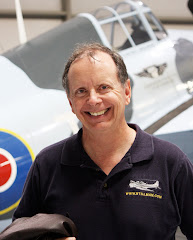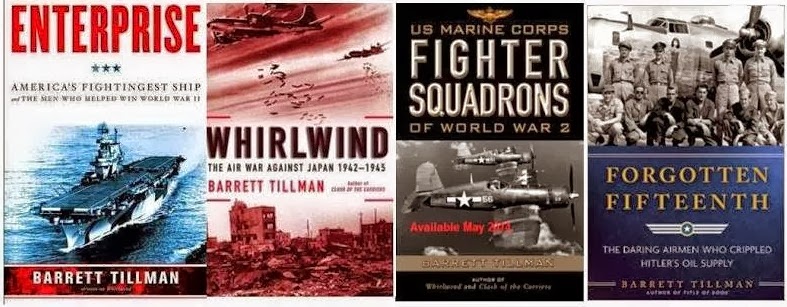Last year was the 100th anniversary of
U.S. naval aviation, and I believe the Royal Navy had observed its aeronautical
centennial in 2009. But it occurred to me that nobody had asked the world
champion carrier aviator about his technique. Captain Eric M. Brown, RN (Ret)
is bound to retain the title approximately forever, based upon his 2,400
arrested landings during an exceptional career. He flew Grumman Martlets (aka
Wildcats) from an escort carrier in 1941, shot down two Focke-Wulf 200s
(another world record), got sunk, and became a world-renowned test pilot. His
literary output is not only impressive but invaluable, considering the immense
variety of aircraft he's flown.
So, having been acquainted with
"Winkle" since the 1980s, I wrote him in May 2011 asking about his
method of landing aboard aircraft carriers in the 1940s. He replied with a
beautifully hand-written letter in response to my inquiry as to his method in
trapping on a specific wire on all those CVEs. I also asked him about the RN's
master baggers, and he confirmed that the Double Grand Club is limited to two
members. He's "president" with 2,400 traps. This year he's 93 and, as
you'll see, remains active.
* * *
As to the subject of deck landings
(DLs). I have records of the top “scorers” in the Fleet Air Arm, and besides
myself we had one other, Lt. Cdr. Bill bailey, who just exceeded 2,000 DLs
which he acquired during 3 years as a “clockwork mouse” (demonstrating landings
to endless courses of wartime recruited naval pilots.) However, after this
there is a big gap down to 600 with very few in that bracket. I’m afraid Mike
Lithgow was not a high scorer—about 200.
I started my score in 1941 and really
piled them up in 1942 and ’43 when I was graded as an escort carrier specialist
and proofed all the new “Woolworth carriers” coming over brand new from
American shipyards, and some also from UK shipyards. I proofed 20 carriers in
all, and this involved flying 4 types of aircraft (two torpedo bombers and two
fighters) into each of normally 8 arrester wires twice each with each type of
aircraft, followed by an accelerated takeoff.
At first I had 3 pilots to assist me,
but they were soon withdrawn because their trap rate on a selected wire was too
low and the process took far too long. When on my own my trap rate on a
selected wire averaged about 80% without a LSO, which I dispensed with largely
because he was replaced too frequently or none was readily available in
wartime.
I employed a standard DL technique of
never letting my approved speed creep above 1.1 VS, then aiming for the wire
beyond the one that was my target, and cutting the throttle as it disappeared
from my forward view.
In 1943 I was mainly engaged in deck
landing various models of Seafire while in the Navy’s Service Trials Unit, and
logged over 500 traps in that somewhat tricky aircraft.
Thereafter in the six years as Chief
Naval test Pilot at RAE Farnborough I was responsible for making the initial
deck landings on virtually every new type of naval aircraft that came into
service, including our first twin-engined aircraft.
After 1941 I also became heavily
involved in catapulting trials, particularly at Farnborough where we had every
type of new catapult installed. In fact, my total catapult launches (2,721)
exceeds my total traps (2,407) because so many were made ashore. There is a
wonderful book recording all the work at RAE entitled Farnborough and the
Fleet Air Arm by Geoffrey Cooper, published by Midland Publishing in 2008.
I am still active in the lecturing
circuit and tour around Europe quite a lot. I see a bit of my astronaut friend
Neil Armstrong—we were both given honorary doctorates by Edinburgh University
at the same time.



